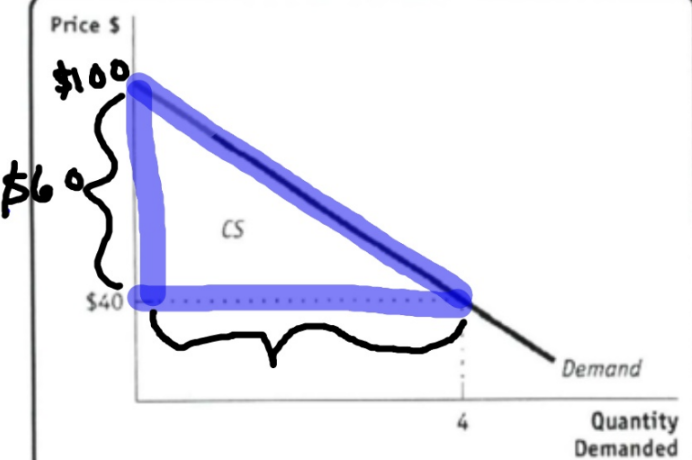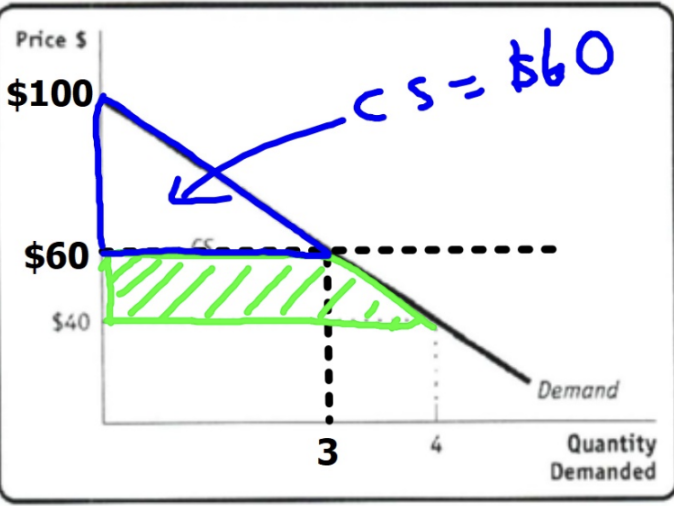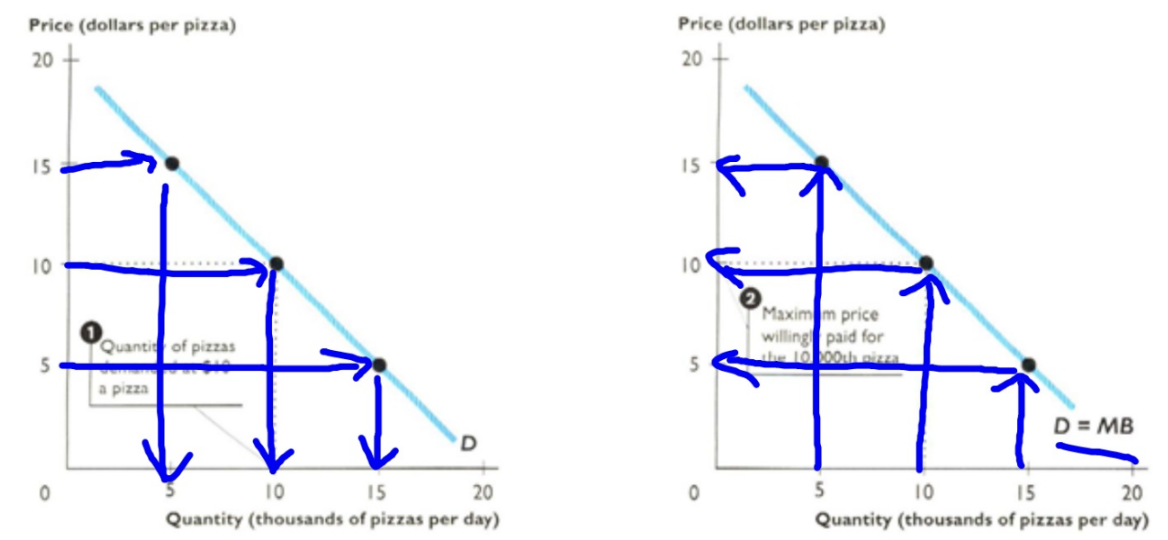Lesson 1: Consumer & Producer Surplus
1/22
There's no tags or description
Looks like no tags are added yet.
Name | Mastery | Learn | Test | Matching | Spaced |
|---|
No study sessions yet.
23 Terms
Market Failures
Situations where a market overproduces or underproduces economically desired goods
Two types of Market Failures
Demand-Side market failures
Supply-side market failures
Demand-Side market failures
these happen when demand curve do not reflect consumers’ full willingness to pay (WTP) for a good or service; these arise because it is impossible in certain cases to charge consumers what they are willing to pay for a product (ex. Fireworks show)

Supply-side market failures
these occur when supply curves do not reflect the full cost of producing a good or service; these arise in situations in which a firm does not have to pay the full cost of producing its output (ex. pollution of factories invading neighborhoods)

TWO conditions that must hold if a competitive market is to produce efficient outcomes
The demand curve in the market must reflect the consumers’ willingness to pay (WTP)
The supply curve in the market must reflect ALL the costs of production
*If these conditions hold, then the market will produce only units for which benefits are at least equal to costs. It will also maximize the amount of “benefits surpluses” that are shared between consumers and producers
Difference between value and price
Value/Marginal Benefit/ Willingness to Pay is what we get from something
Price is what we pay for something
Marginal Benefit
In economics, this is the everyday idea of value which we measure as the maximum price that people are willing to pay for another unit of the good or service
Consumer Surplus
What people receive when they buy something for less than it’s worth to them; net gain in happiness for a consumer measured in dollars (WTP-P) or (1/2 quantity x price (triangle found under the demand curve, above the price, and against the vertical axis)); the marginal benefit from a good/service MINUS the price paid for it, summed over the quantity demanded.

WTP Numbers
Can be used as a demand schedule and graphed like a step-wise demand curve. The height of the rectangles represents the WTP

How changing prices affect consumer prices
At a higher price, there is a smaller triangle of CS

Demand, Willingness to Pay, and Marginal Benefit
Price determines quantity demanded
Quantity determines willingness to pay
The Demand Curve is also the marginal benefit curve (MB=D)

Expenditure of a product
Price of each unit x quantity bought
Total Benefit
The amount paid plus consumer surplus
Difference between cost and price
Cost is what you give up to supply some good/service
Price is what is received for supplying some good/service
Marginal Cost
In economics, the cost of producing one more unit of a good or service
When is it worth producing one more unit of a good or service
If the price for which it can be sold equals marginal cost
Producer Surplus and the Supply Curve
Sellers enjoy higher prices and the benefit they receive is equal to the difference between the price received from the sale and the cost of producing each unit. This cost represents the minimum price the seller must receive to offer that unit to the market. As the price rises higher and higher above this cost, the seller earns more and more benefit (consumer surplus/profit (not really))
Cost and the Supply Curve
There’s a positive relationship between price and quantity supplied which reflects the Law of Supply. So costs to produce units serve as a supply schedule and a step-wise supply curve can be drawn

Producer Surplus
(P-Cost) or (1/2 quantity x price (area of triangle above the supply curve, under the price, and against the vertical axis)); the price of a good in excess of the marginal cost of producing it, summed over the quantity supplied

Total Revenue
Price per unit x Quantity sold
How Changing Prices Affect Producer Surplus
At lower prices, the triangle of PS gets smaller

Supply, Minimum Supply Price, and Marginal Cost
Price determines Quantity Supplied
Quantity determines minimum supply price (marginal cost/supply)
When the price exceeds marginal cost, the firm obtains a producer surplus

Total Cost
The amount recieved from selling it minus producer surplus